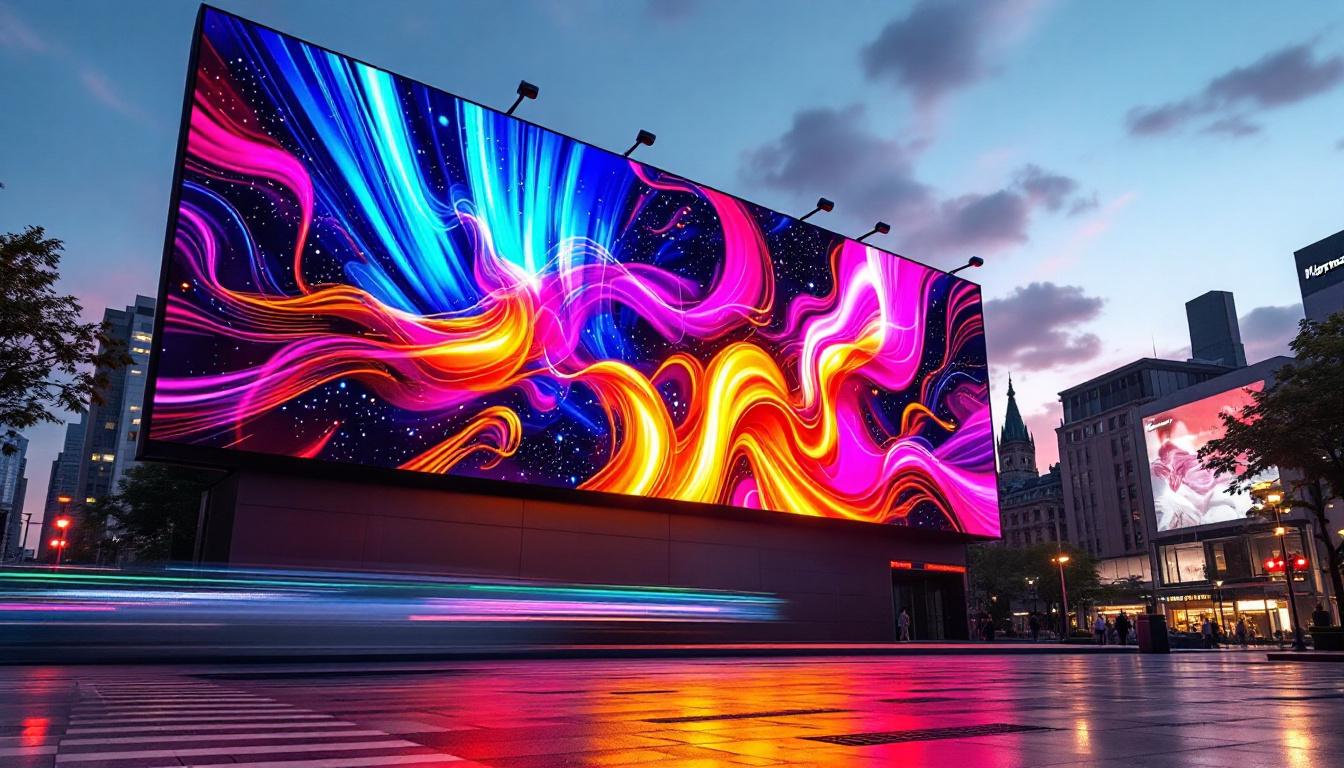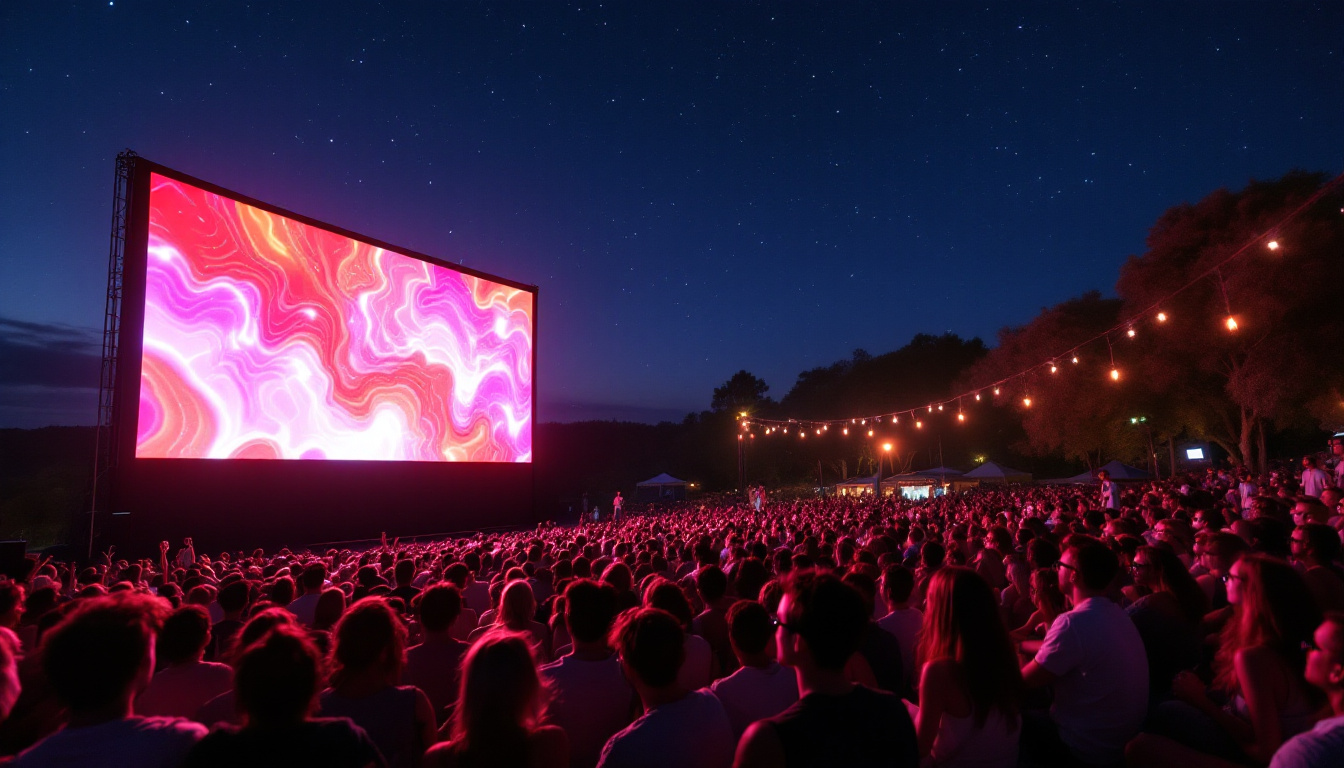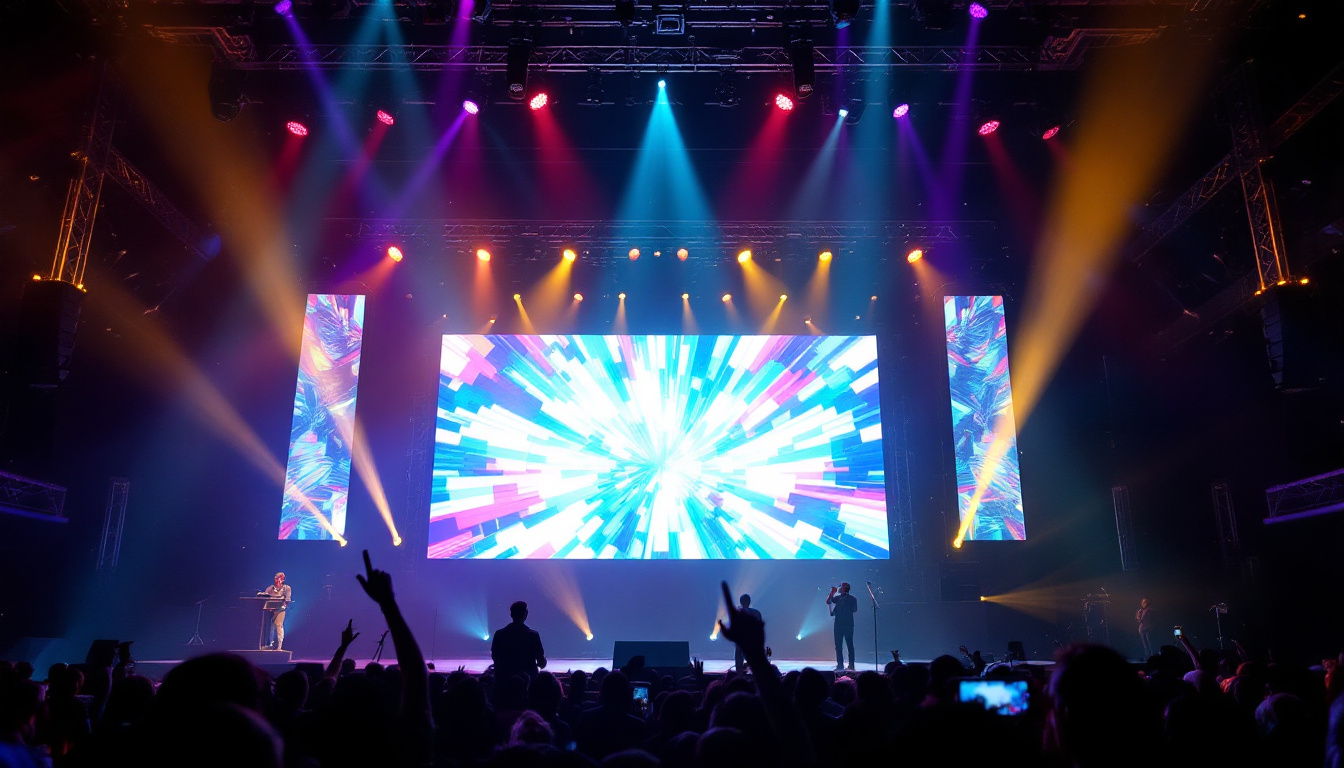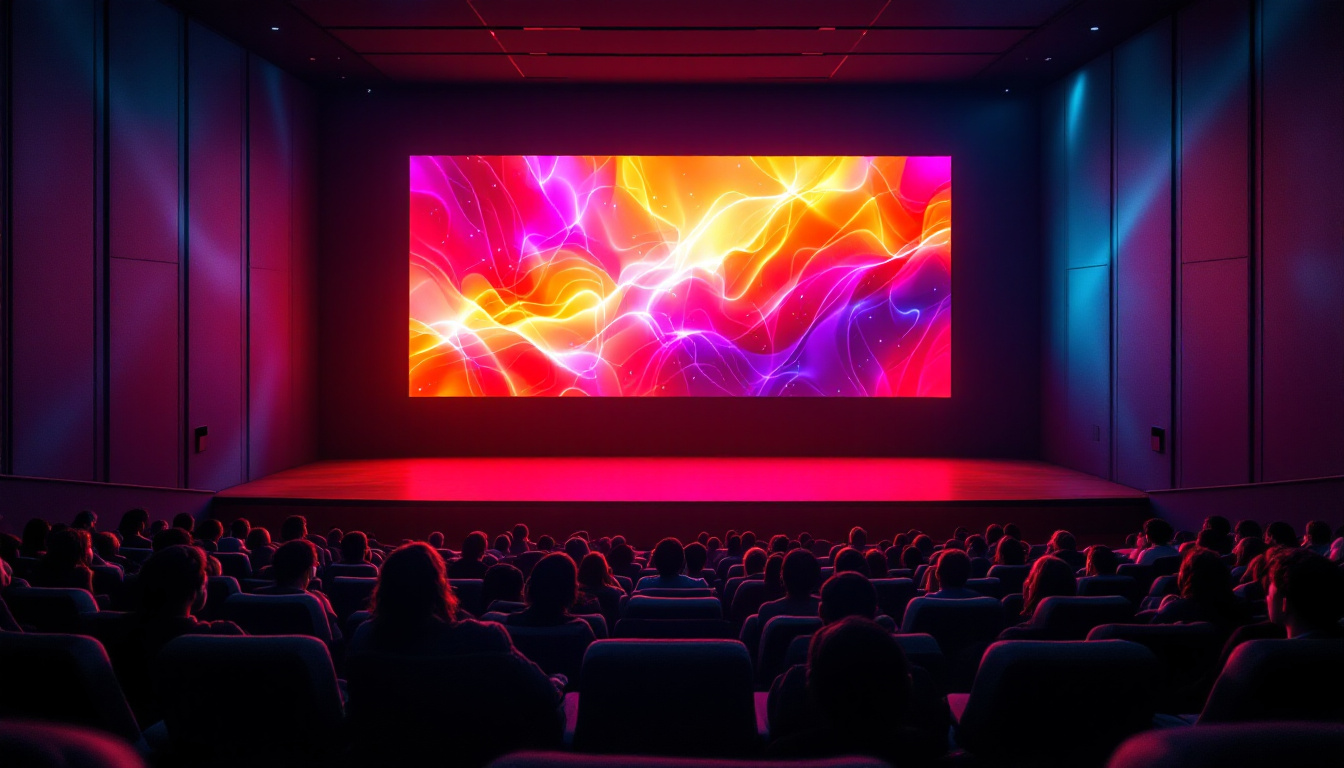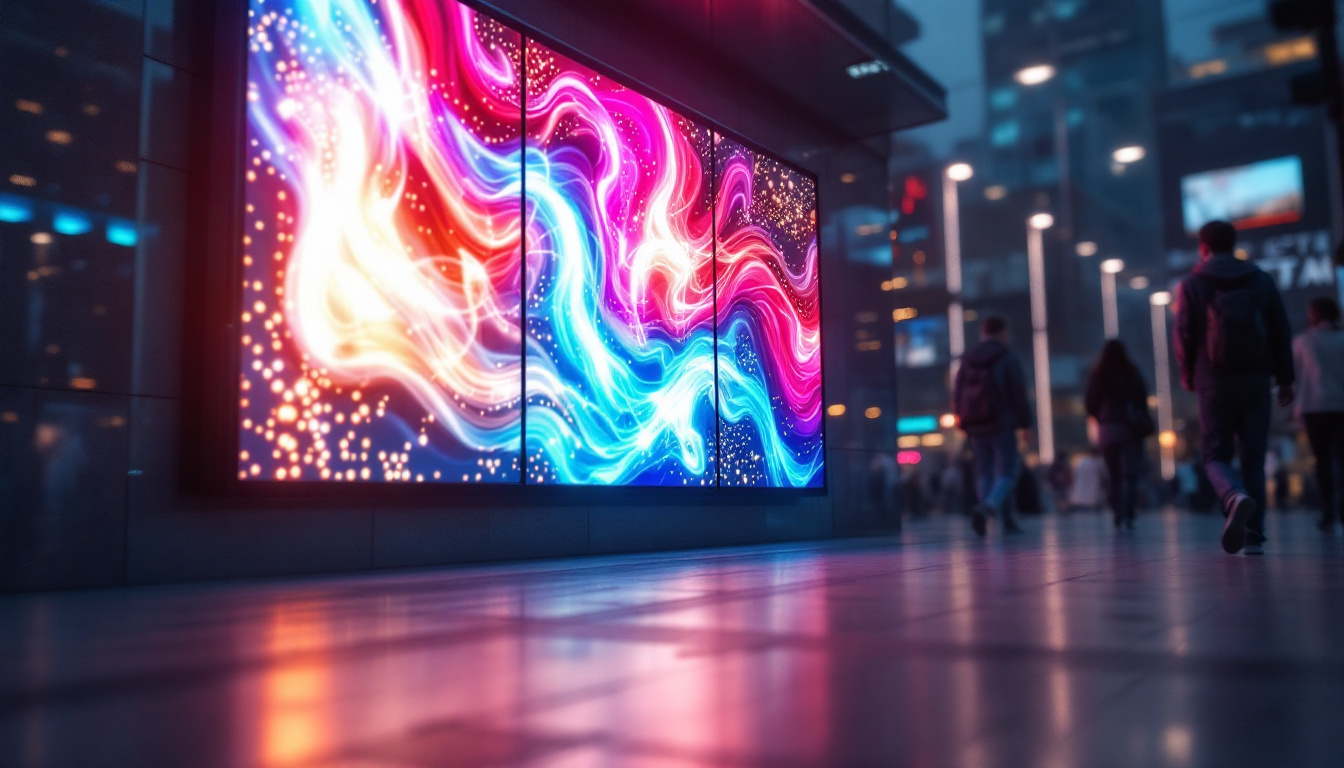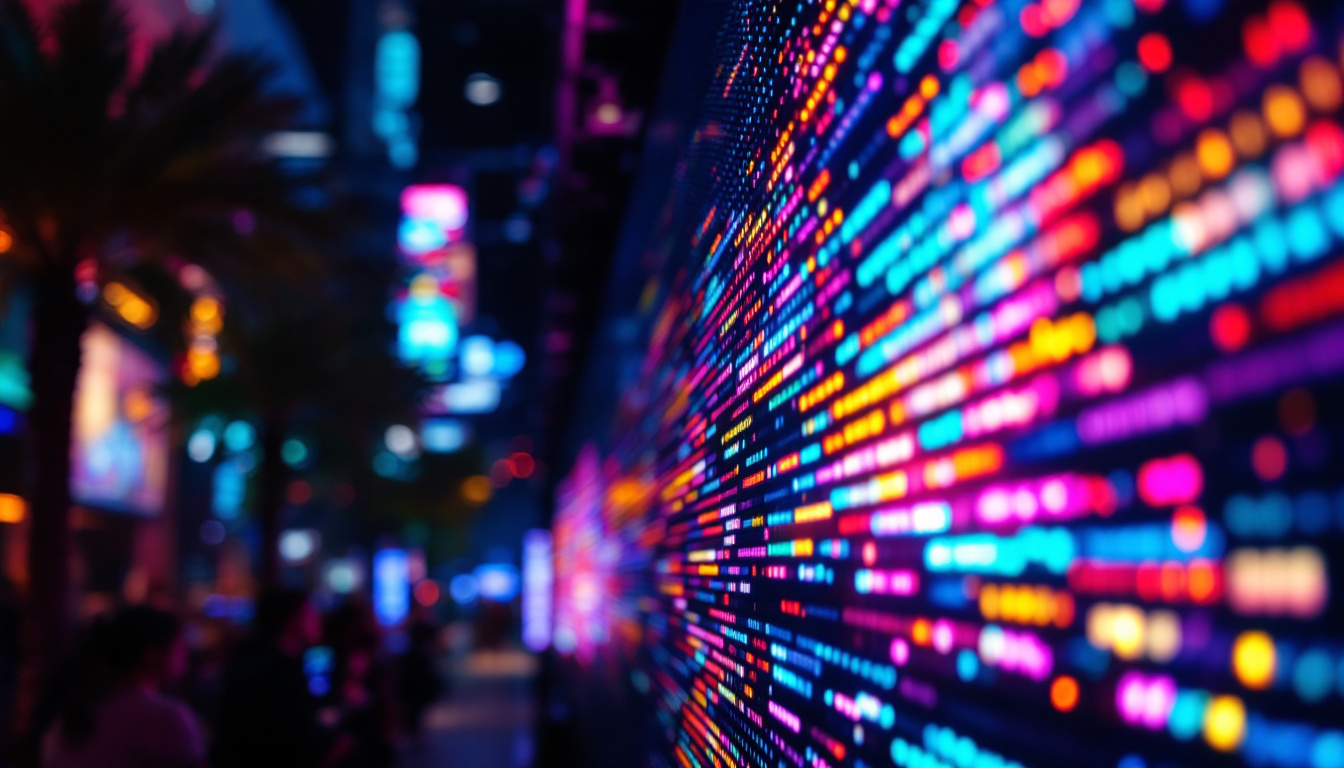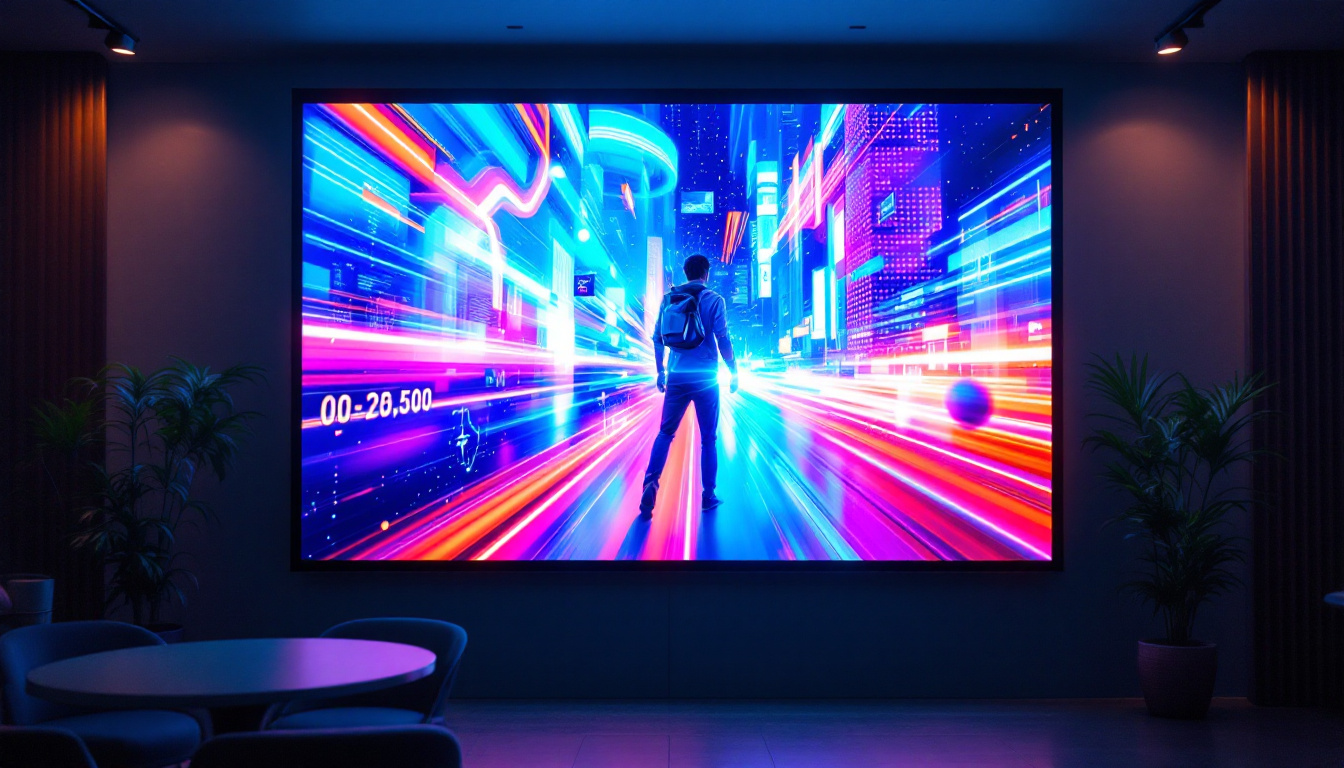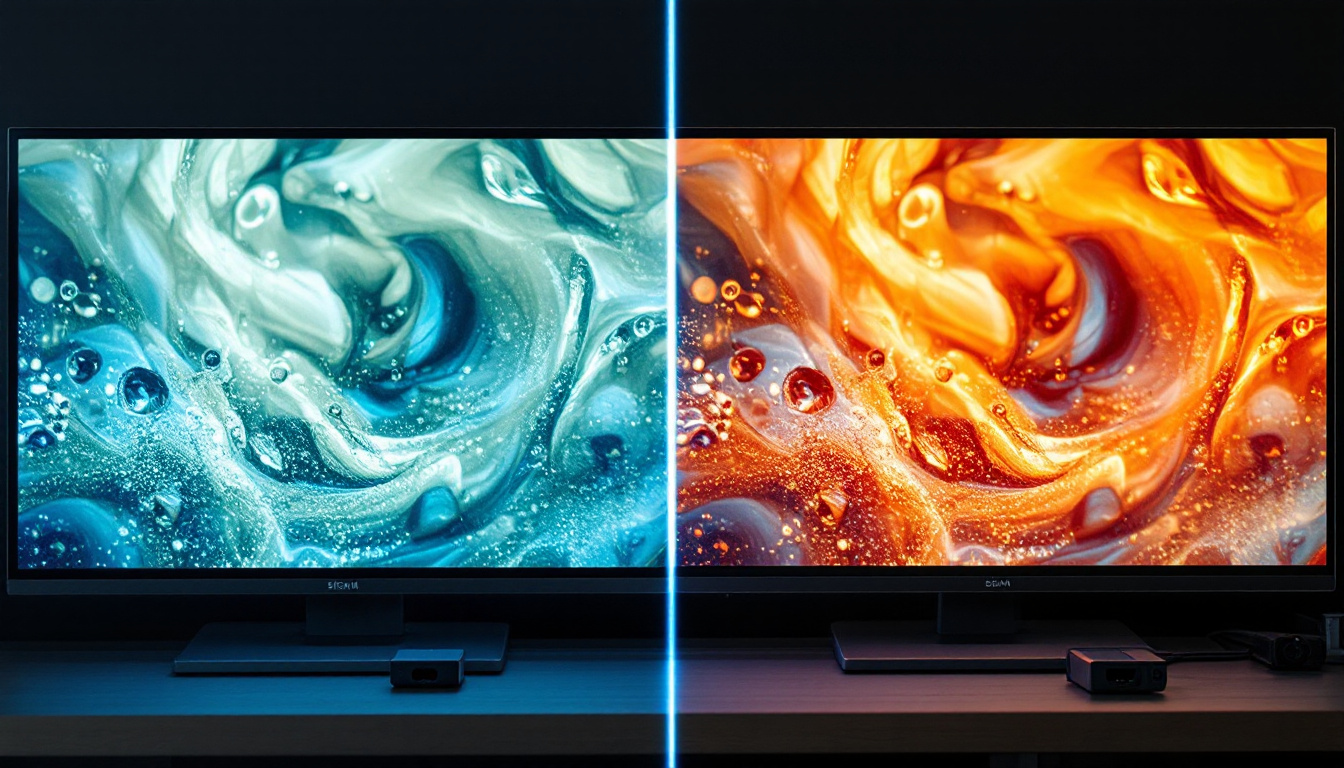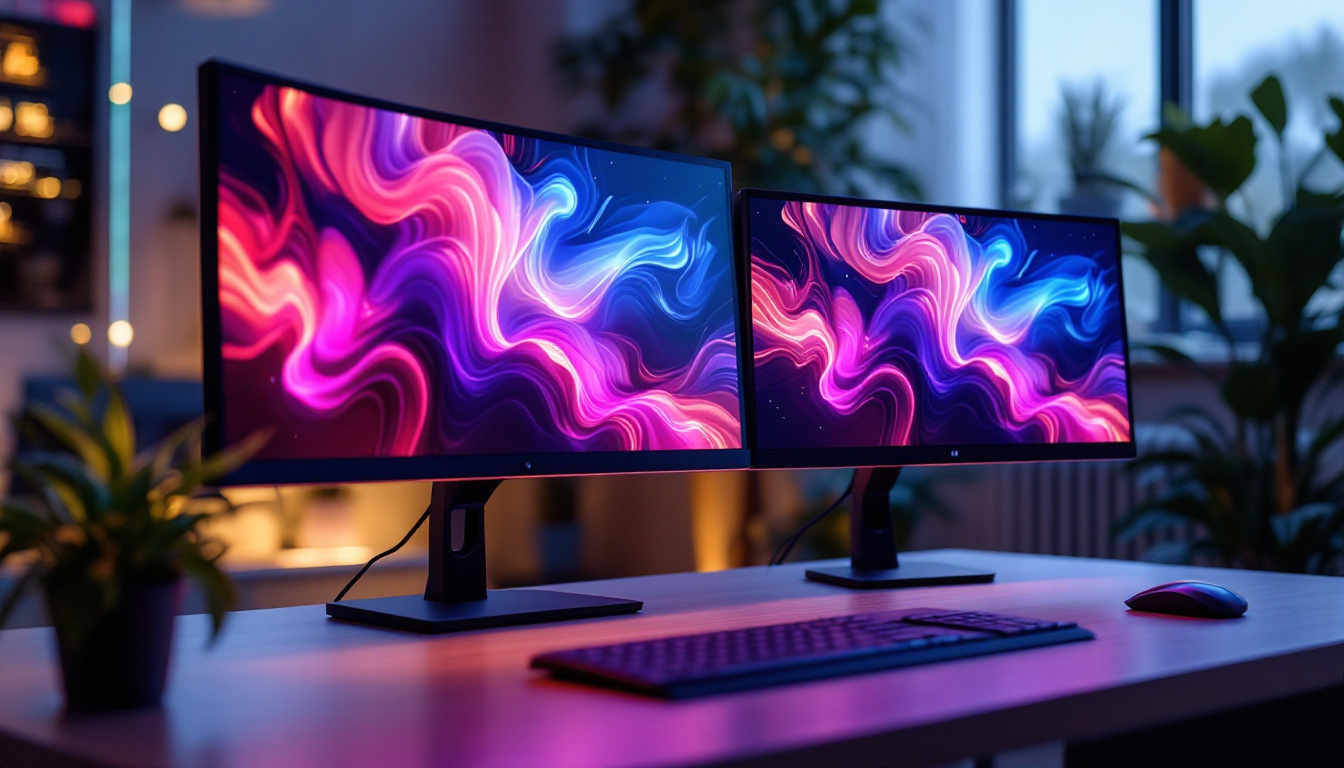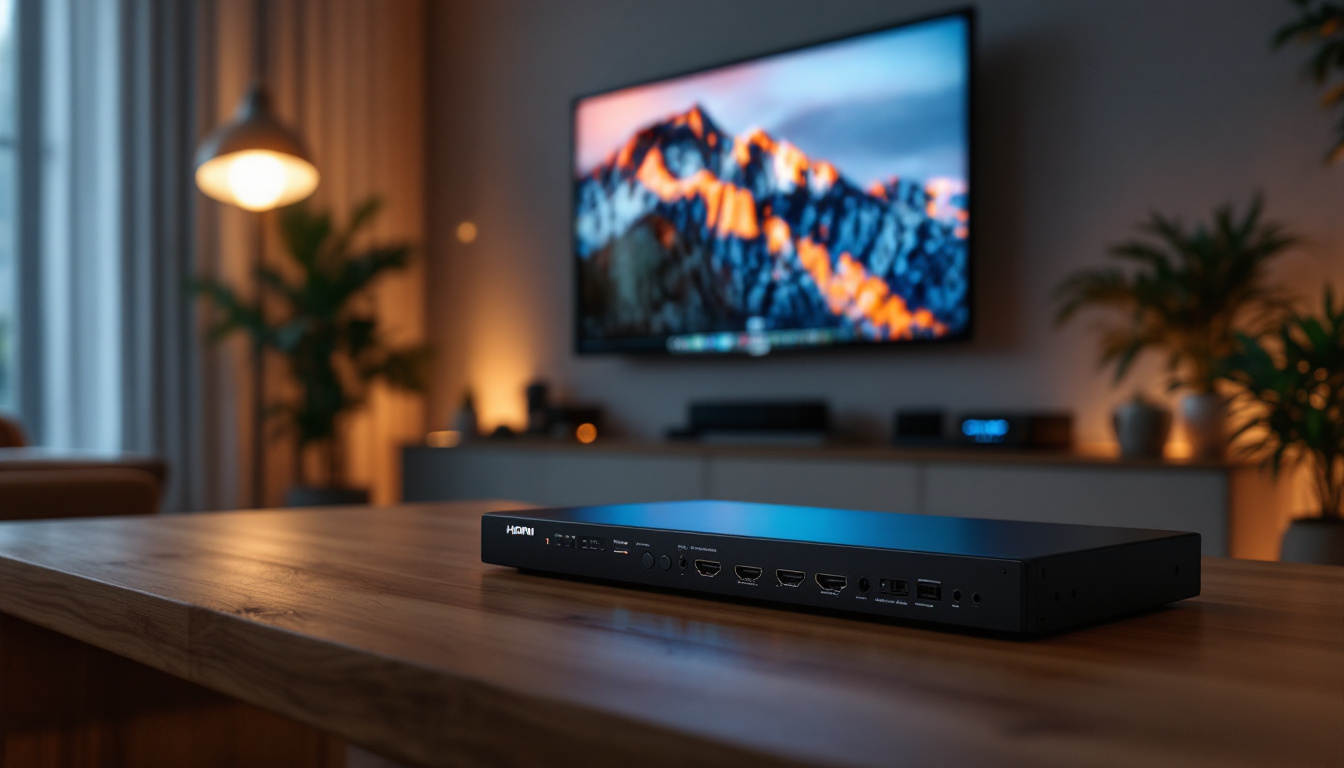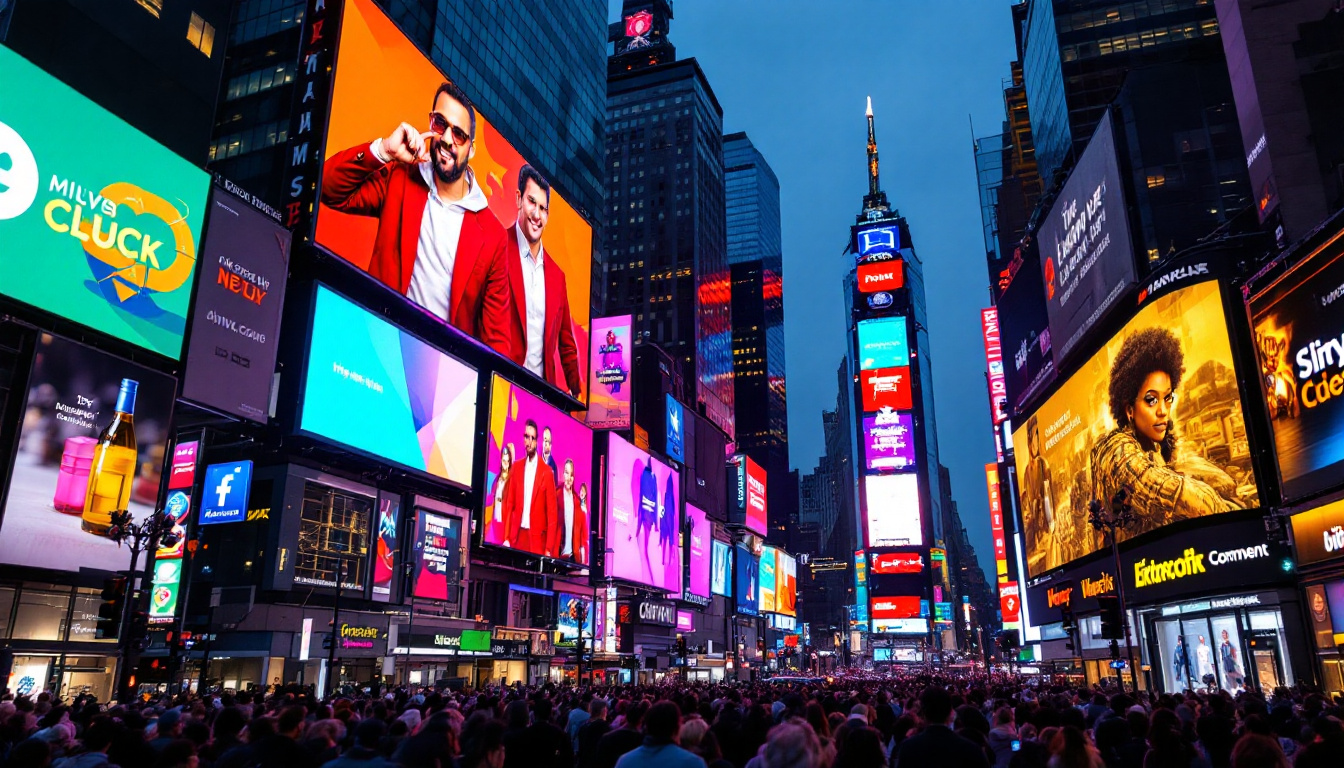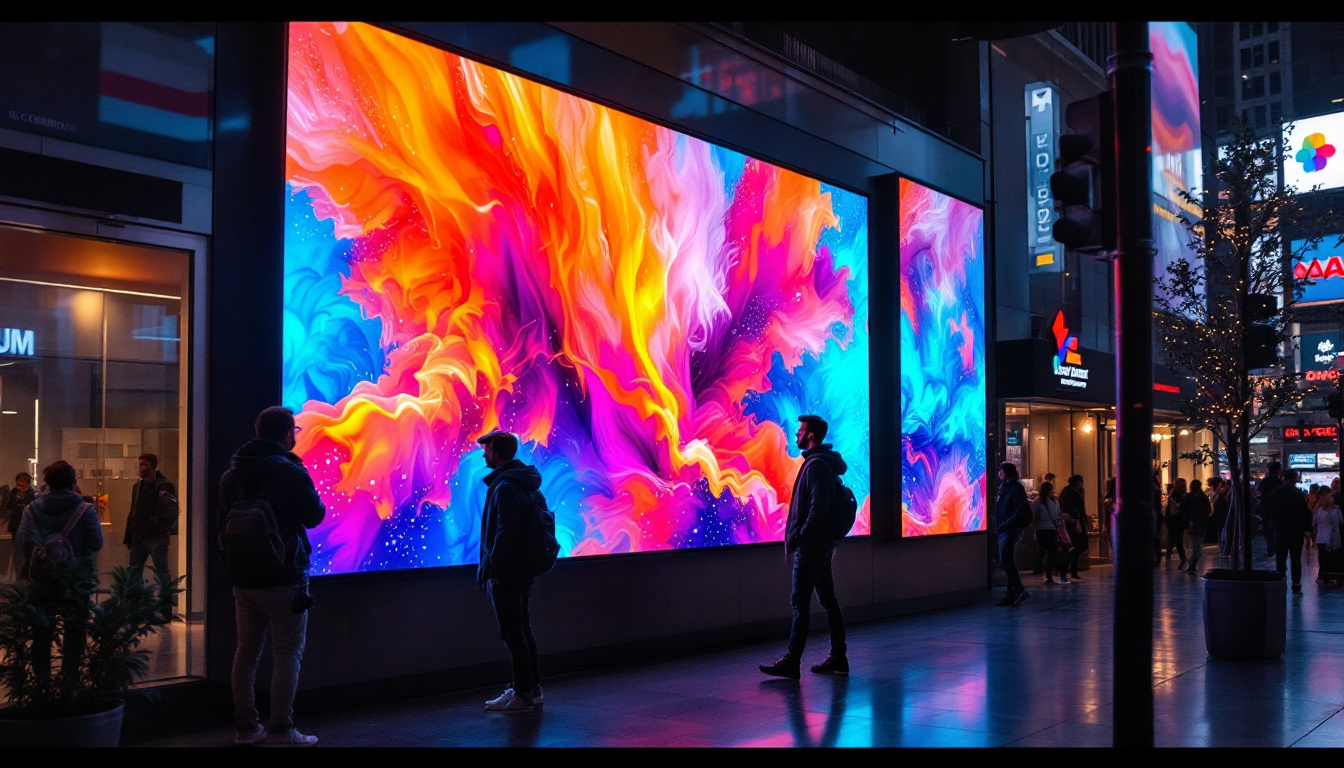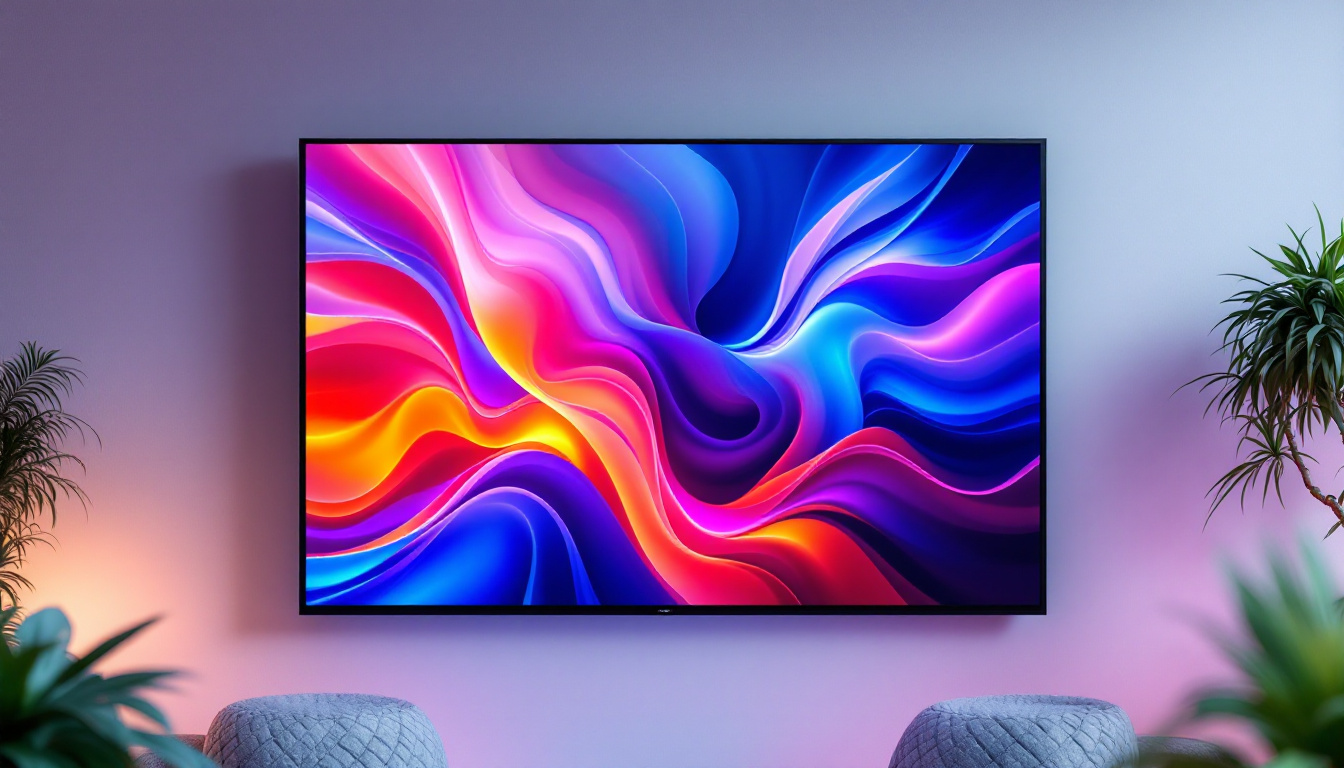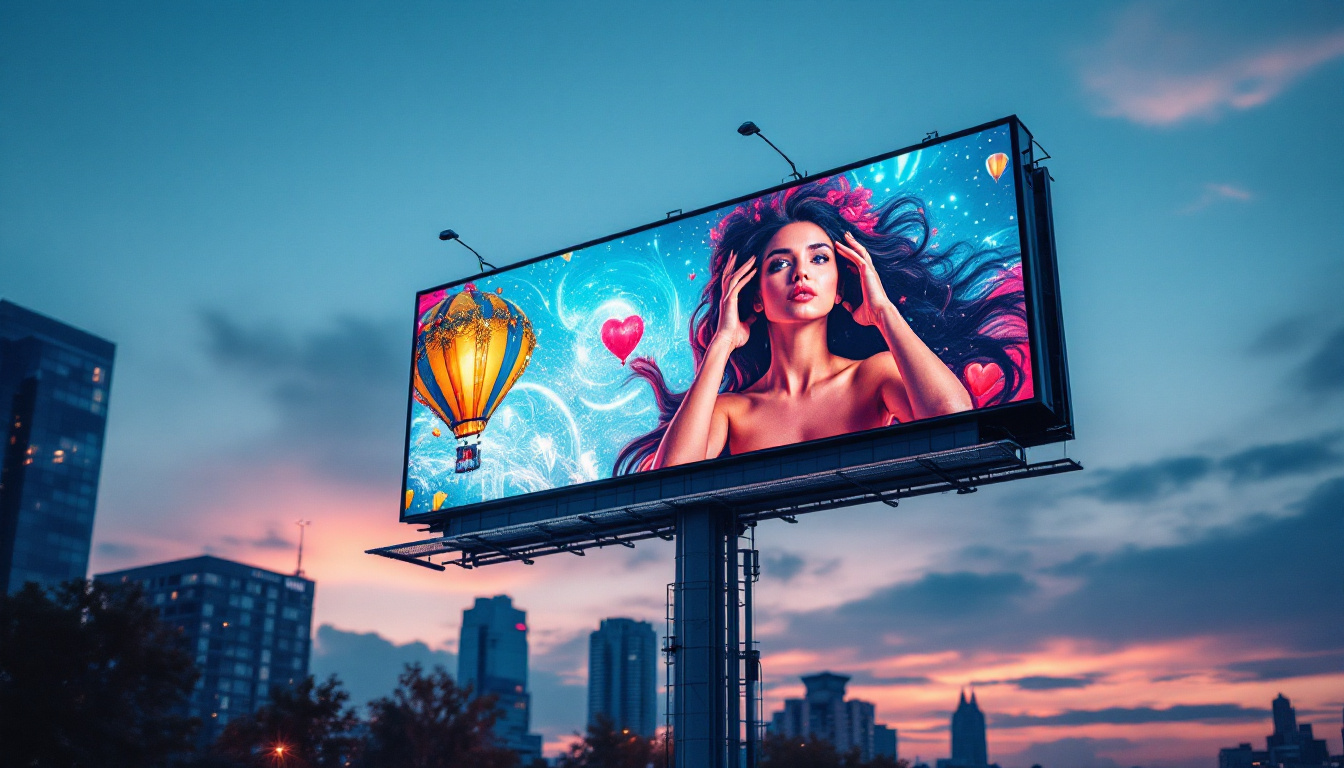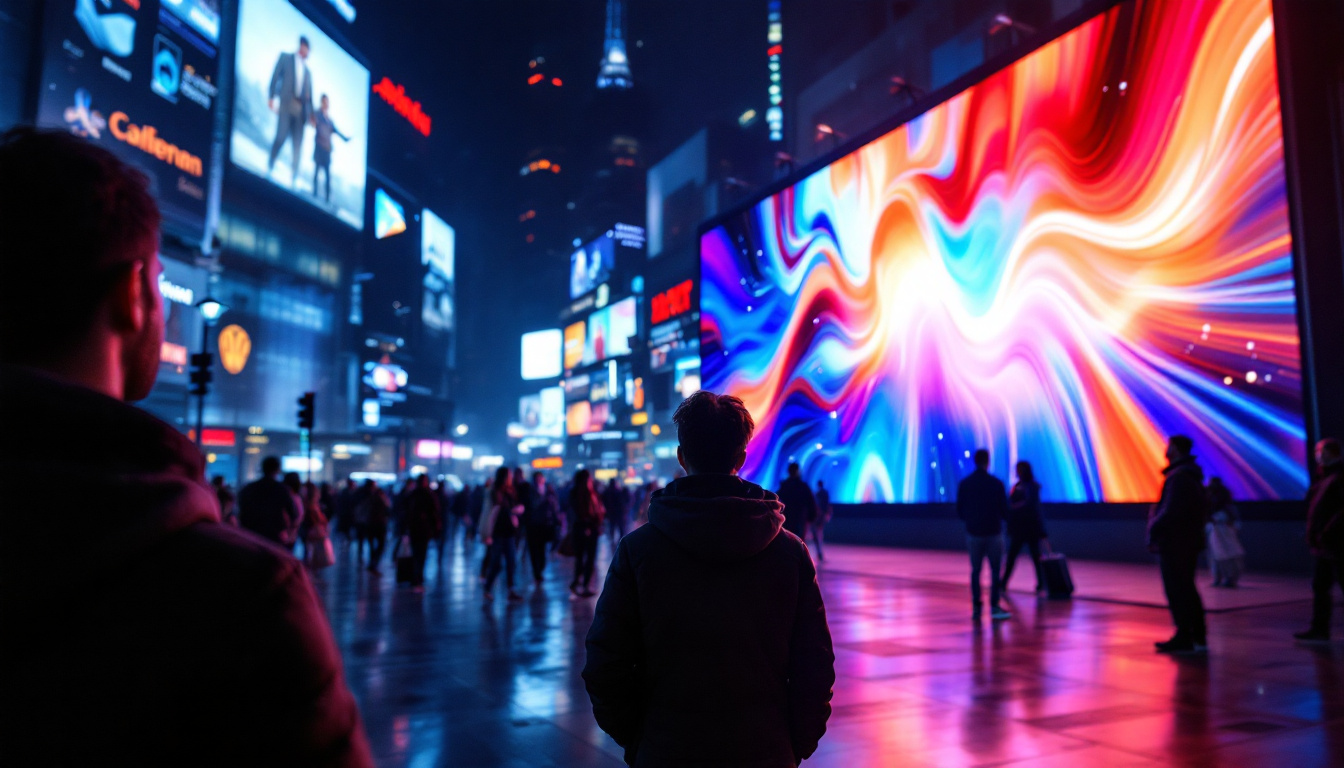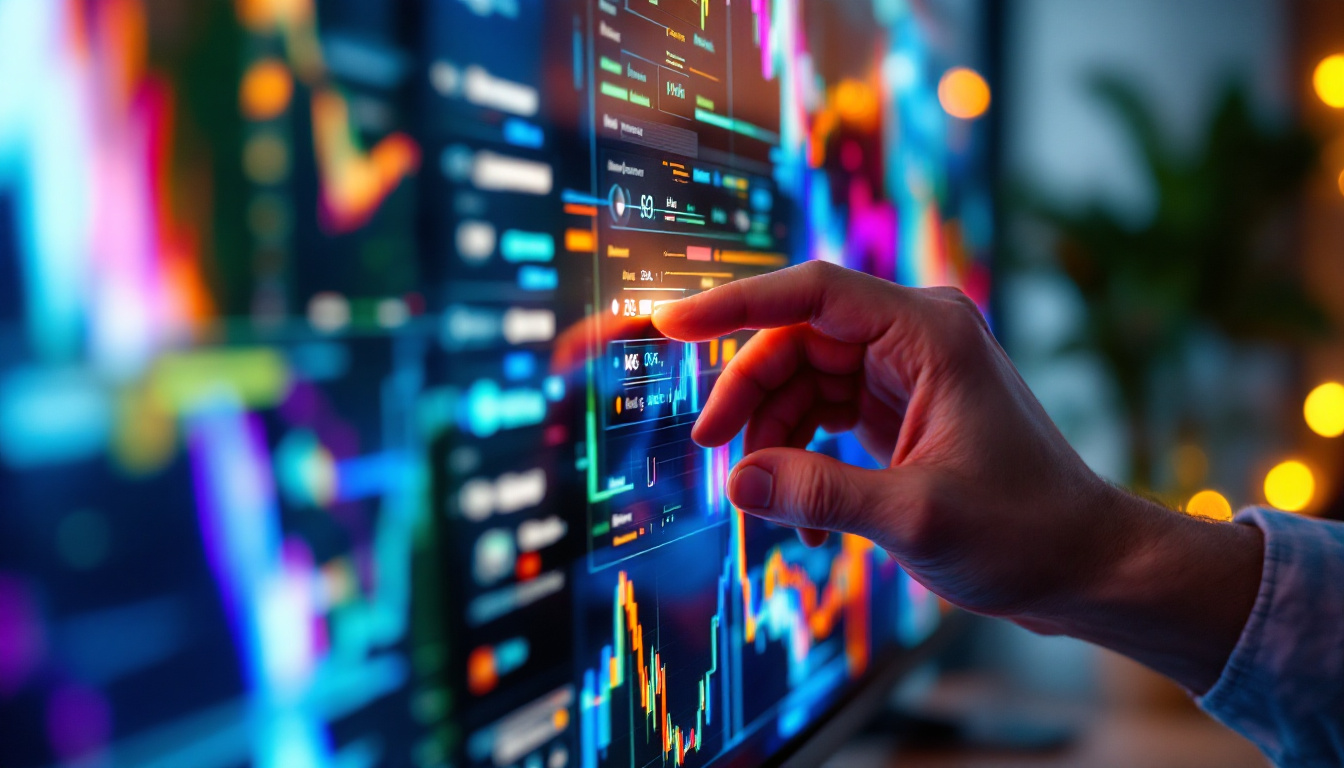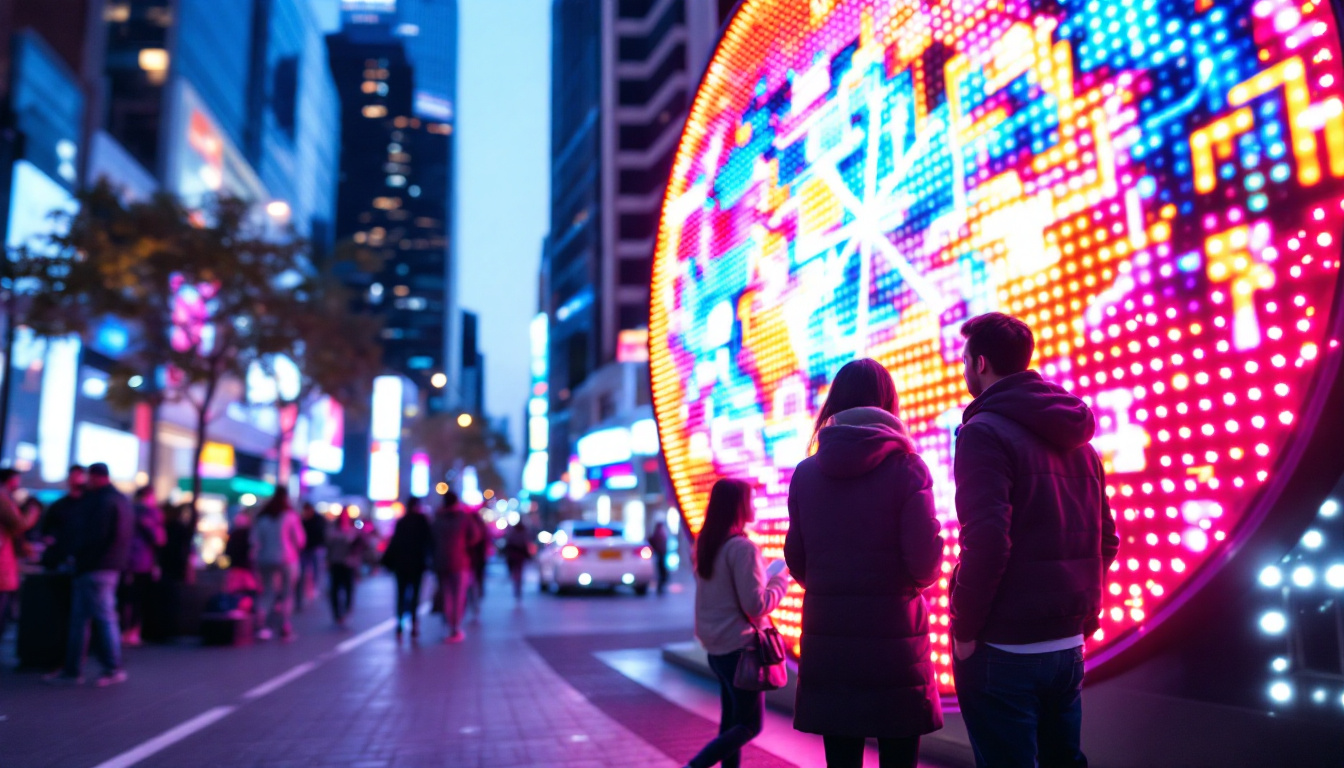In the rapidly evolving world of digital audio-visual technology, LED displays have become a cornerstone for delivering vibrant, high-impact visual content. From massive outdoor billboards to sleek indoor video walls, LED display technology is transforming how audiences engage with digital media. This article delves into the fundamentals of LED displays, exploring their technology, applications, benefits, and future trends to provide a comprehensive understanding of why they are a preferred choice in digital AV solutions.
Understanding LED Display Technology
LED, or Light Emitting Diode, displays use an array of tiny light sources to create images. Unlike traditional LCD or projection screens, LED displays emit their own light, which results in brighter, more vivid visuals with better contrast ratios.
How LED Displays Work
At the core of an LED display are thousands to millions of individual LEDs arranged in a grid. Each LED acts as a pixel or part of a pixel, emitting light when an electric current passes through it. The color and brightness of each pixel are controlled by varying the current, enabling the display to render complex images and videos.
Modern LED displays use red, green, and blue diodes to produce a full spectrum of colors through additive color mixing. This direct emission technology allows for superior brightness and color accuracy compared to backlit LCD panels. Additionally, advancements in technology have led to the development of high dynamic range (HDR) capabilities, which enhance the contrast and color range, making images appear more lifelike and immersive. This is particularly beneficial in applications such as gaming and cinematic experiences, where visual fidelity is paramount.
Types of LED Displays
LED displays come in several varieties, tailored to different environments and use cases:
- Indoor LED Displays: Designed for controlled lighting conditions, these displays offer high resolution and fine pixel pitch, making them ideal for conference rooms, retail spaces, and broadcast studios. Their ability to deliver sharp images even at close viewing distances makes them a popular choice for presentations and advertising in indoor settings.
- Outdoor LED Displays: Built to withstand weather elements, these displays feature higher brightness levels (often exceeding 5,000 nits) to remain visible even in direct sunlight. They are commonly used for advertising billboards, sports arenas, and public information screens. The durability of outdoor displays is enhanced by protective coatings that resist water, dust, and UV damage, ensuring longevity and consistent performance in various environmental conditions.
- Transparent LED Displays: These innovative screens allow light to pass through, enabling them to be installed on glass surfaces without obstructing views. They are popular in retail storefronts and architectural applications, providing a unique blend of visibility for both the display content and the surroundings. This technology not only enhances aesthetic appeal but also allows for dynamic advertising solutions that can engage customers without compromising the architectural integrity of a space.
- Flexible and Curved LED Displays: Utilizing flexible substrates, these displays can be bent or curved to fit unique spaces, adding creative possibilities for digital signage and immersive environments. Their versatility allows for installations in unconventional shapes and sizes, enabling designers to push the boundaries of traditional display formats. This adaptability is particularly advantageous in venues like museums and exhibitions, where engaging visual presentations are crucial to enhancing the visitor experience.
Key Advantages of LED Displays in Digital AV
The widespread adoption of LED displays in digital AV is driven by several critical advantages that meet the demands of modern visual communication.
Exceptional Brightness and Visibility
One of the most significant benefits of LED displays is their ability to produce intense brightness levels. Outdoor LED screens can reach brightness levels upwards of 7,000 nits, making them clearly visible even in direct sunlight. This characteristic is vital for outdoor advertising and public information displays where ambient light conditions vary throughout the day. Furthermore, the high brightness ensures that content remains legible from a distance, making it ideal for large-scale events, concerts, and sporting venues where audiences are spread out across vast areas. The ability to maintain visibility under various lighting conditions enhances the effectiveness of marketing campaigns and public announcements, ensuring that messages reach their intended audience without compromise.
Superior Color Accuracy and Contrast
Because LEDs emit light directly, they can achieve true blacks by turning off individual pixels completely, resulting in infinite contrast ratios. This capability enhances the depth and realism of images, providing viewers with a more immersive experience. Additionally, LED displays support wide color gamuts, often exceeding the standard sRGB range, which is essential for accurate brand representation and high-quality video playback. The precision in color reproduction is particularly beneficial in creative industries such as film and photography, where the fidelity of visual content is paramount. Moreover, advancements in LED technology continue to improve color calibration processes, allowing for consistent and vibrant displays across multiple screens, which is crucial for applications like video walls and multi-screen setups.
Energy Efficiency and Longevity
Compared to other display technologies, LEDs consume less power, which translates to lower operating costs and a reduced environmental footprint. Furthermore, LED displays have a long operational lifespan, often rated between 50,000 to 100,000 hours, minimizing maintenance and replacement expenses. This longevity not only benefits businesses economically but also supports sustainability efforts, as fewer displays need to be manufactured and disposed of over time. The reduced energy consumption is particularly advantageous in large installations, where the cumulative savings can be substantial. Additionally, many modern LED displays come equipped with smart technology that allows for dynamic brightness adjustments based on ambient light, further enhancing energy efficiency while maintaining optimal viewing conditions.
Scalability and Customization
LED displays can be built to virtually any size or shape by combining multiple modules seamlessly. This scalability allows for tailored solutions that fit unique architectural or branding requirements. The modular design also facilitates easy maintenance and upgrades. For instance, businesses can start with a smaller display and expand it as their needs grow, making it a flexible investment. The customization options extend beyond size; they also include pixel pitch variations, which allow for high-resolution displays suitable for close viewing or larger pixel pitches for distant viewing. This adaptability makes LED technology suitable for a wide range of applications, from retail environments and trade shows to art installations and corporate events, ensuring that each display can be optimized for its specific context and audience.
Applications of LED Displays in Various Industries
LED display technology has found a broad range of applications across multiple sectors, each leveraging its unique strengths to enhance communication and engagement.
Advertising and Outdoor Signage
Digital billboards and outdoor advertising rely heavily on LED displays due to their brightness, durability, and ability to display dynamic content. According to recent market research, the global digital signage market is expected to grow at a CAGR of over 8% through 2028, with LED technology leading the charge. Brands use LED billboards to deliver timely promotions, interactive campaigns, and real-time information to large audiences.
Entertainment and Events
Concerts, sports arenas, and live events utilize large LED video walls to create immersive visual experiences. The flexibility of LED panels allows for creative stage designs, including curved or irregular shapes, enhancing audience engagement. High refresh rates and low latency are critical in these settings to ensure smooth video playback and live feed integration.
Corporate and Retail Environments
In corporate settings, LED displays are used for video conferencing, presentations, and digital signage within lobbies or meeting rooms. Retailers employ LED screens for dynamic product displays, promotional messaging, and interactive customer experiences. The ability to update content remotely and in real time makes LED displays a versatile tool for brand communication.
Transportation and Public Information
LED displays are instrumental in airports, train stations, and bus terminals for providing real-time schedules, safety messages, and wayfinding information. Their high visibility and reliability ensure passengers receive critical updates promptly.
Technical Considerations When Choosing an LED Display
Selecting the right LED display requires careful evaluation of several technical parameters to ensure optimal performance and return on investment.
Pixel Pitch and Resolution
Pixel pitch, measured in millimeters, refers to the distance between the centers of adjacent LEDs. A smaller pixel pitch means higher resolution and finer image detail, which is essential for close viewing distances. For example, indoor LED displays often have pixel pitches ranging from 0.9mm to 4mm, while outdoor displays typically range from 4mm to 20mm or more.
Brightness and Contrast Ratio
Brightness is measured in nits (candelas per square meter). The required brightness depends on the installation environment; outdoor displays need higher brightness to combat sunlight, while indoor displays can operate at lower levels to reduce eye strain. Contrast ratio, the difference between the brightest white and darkest black, affects image depth and clarity.
Refresh Rate and Viewing Angle
Refresh rate, measured in Hertz (Hz), indicates how many times per second the image is updated. Higher refresh rates (above 120Hz) reduce flicker and are crucial for video content and live broadcasts. Viewing angle defines the maximum angle from which the display can be viewed without significant color or brightness degradation. Wide viewing angles ensure consistent image quality across large audiences.
Durability and Environmental Protection
For outdoor installations, displays must have robust enclosures with IP65 or higher ratings to protect against dust and water ingress. Temperature control features, such as fans or heaters, help maintain optimal operating conditions in extreme climates.
Future Trends in LED Display Technology
The LED display market continues to innovate rapidly, driven by advances in materials science, electronics, and digital content delivery.
MicroLED and MiniLED Innovations
MicroLED technology represents the next generation of LED displays, featuring microscopic LEDs that enable even higher resolution, better energy efficiency, and improved contrast. MiniLEDs, which are slightly larger than MicroLEDs, are already being integrated into premium TVs and monitors, offering enhanced HDR performance.
Integration with Smart and Interactive Technologies
LED displays are increasingly incorporating touch capabilities, sensors, and AI-driven content management systems. This integration allows for personalized, interactive experiences in retail, education, and public spaces, enhancing user engagement.
Eco-Friendly and Sustainable Designs
Manufacturers are focusing on reducing the environmental impact of LED displays by using recyclable materials, improving energy efficiency, and developing longer-lasting components. These efforts align with growing corporate social responsibility initiatives and regulatory requirements.
Conclusion
LED display technology has revolutionized digital AV by providing bright, vibrant, and versatile visual solutions across a wide array of industries. Understanding the technical aspects, benefits, and applications of LED displays enables businesses and organizations to make informed decisions when integrating this technology into their communication strategies. As LED technology continues to advance, it promises even more innovative and immersive ways to captivate audiences and convey messages effectively.
Explore Cutting-Edge LED Display Solutions with LumenMatrix
Ready to elevate your visual communication strategy with the latest in LED display technology? LumenMatrix is at the forefront of innovation, offering a diverse range of LED display modules designed to bring your brand to life. From captivating Indoor and Outdoor LED Wall Displays to dynamic Vehicle and Sports LED Displays, our solutions are tailored to meet your unique needs. Discover the transformative power of our LED Poster Displays, Floor LED Displays, Custom LED Solutions, All-in-One LED Displays, and LED Transparent Displays. Embrace the future of digital signage with LumenMatrix and create unforgettable visual experiences. Check out LumenMatrix LED Display Solutions today and see your message shine like never before.

